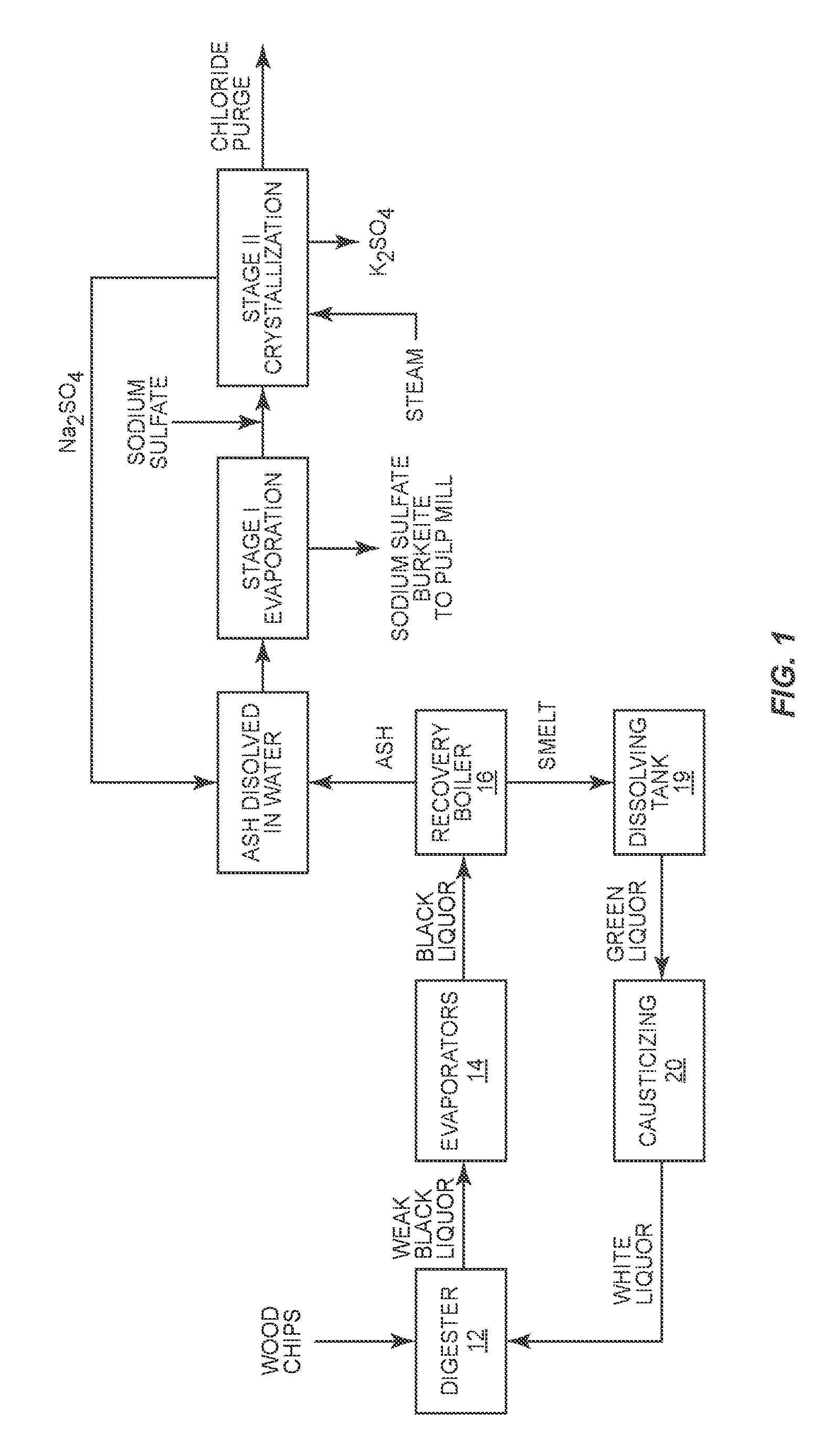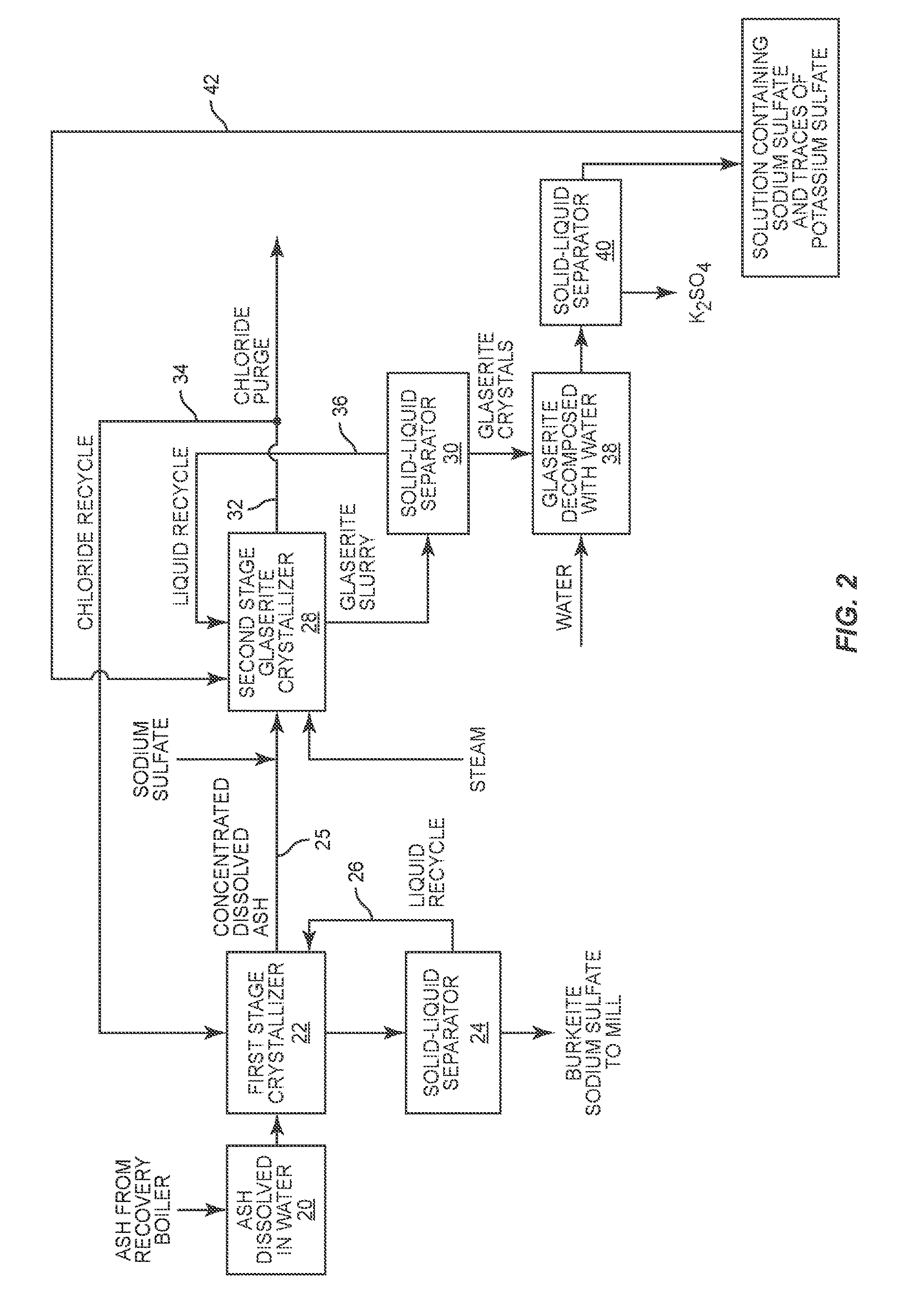Method of recovering pulping chemicals from dissolved ash having a high carbonate content
a technology of dissolved ash and pulping chemicals, which is applied in the field of pulping wood, can solve the problems of limiting the recovery of sodium in the two-stage ash treatment process, corrosion and operation problems in the recovery process, etc., and achieves the effects of improving recovery, improving overall recovery, and increasing flexibility
- Summary
- Abstract
- Description
- Claims
- Application Information
AI Technical Summary
Benefits of technology
Problems solved by technology
Method used
Image
Examples
Embodiment Construction
[0008]The present invention relates to a wood pulping process that entails recovering pulping chemicals from black liquor while reducing the concentration of potassium and chloride in the black liquor. Generally an exemplary wood pulping process entails digesting wood in a digester and separating pulp from the wood and producing black liquor. Thereafter, the black liquor is concentrated and directed to a recovery boiler. In the recovery boiler, the black liquor is burned and in the process produces ash that contains sodium, potassium sulfate, chloride and carbonate. The associated chemical recovery process focuses on removing sodium sulfate and sodium carbonate from the ash and re-using them in what is referred to as the efficient Kraft process. In the process of recovering sodium sulfate and sodium carbonate, it is desirable to remove chloride and potassium that is found in the ash. Chloride and potassium are concentrated in the ash formed during the combustion of black liquor in t...
PUM
| Property | Measurement | Unit |
|---|---|---|
| temperature | aaaaa | aaaaa |
| temperature | aaaaa | aaaaa |
| temperature | aaaaa | aaaaa |
Abstract
Description
Claims
Application Information
 Login to View More
Login to View More - R&D
- Intellectual Property
- Life Sciences
- Materials
- Tech Scout
- Unparalleled Data Quality
- Higher Quality Content
- 60% Fewer Hallucinations
Browse by: Latest US Patents, China's latest patents, Technical Efficacy Thesaurus, Application Domain, Technology Topic, Popular Technical Reports.
© 2025 PatSnap. All rights reserved.Legal|Privacy policy|Modern Slavery Act Transparency Statement|Sitemap|About US| Contact US: help@patsnap.com


